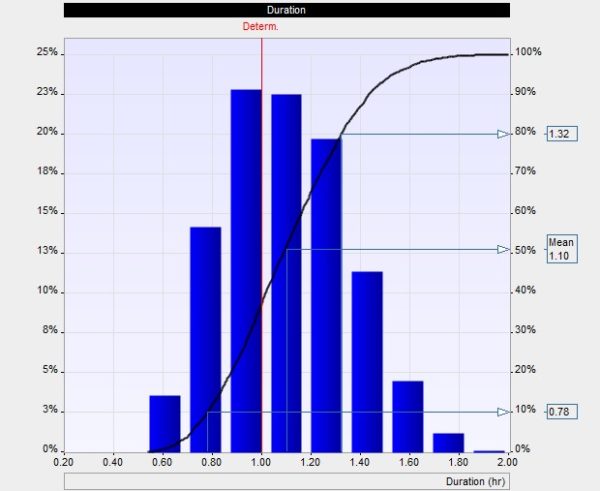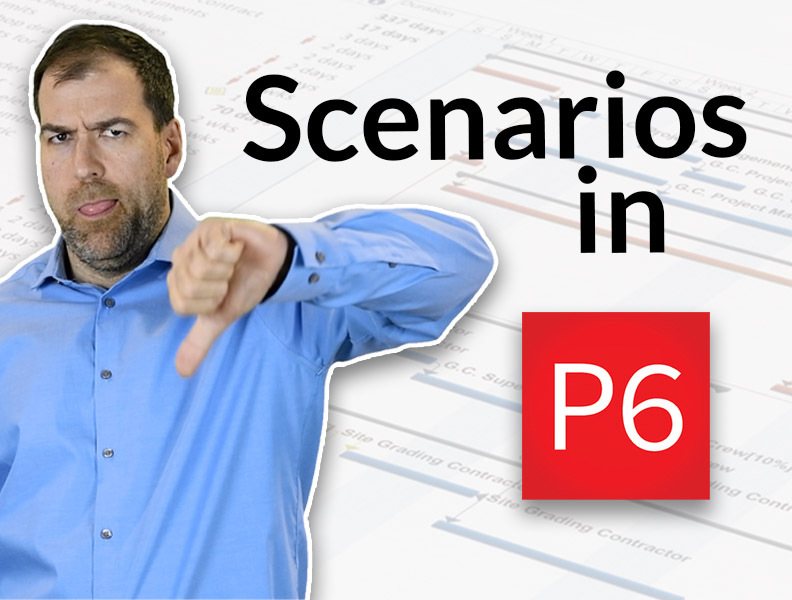The Surprising Benefits of Project Risk Analysis
“How do I convince my team that this is worth the effort?”
This is one of the frequently asked questions that we run across during our discussions with project teams and it is a good question that deserves an answer.
Project risk analysis is not without cost. It takes time and effort to develop the culture, processes and tools to perform them effectively and often, in the same way it takes time to become good at a scheduling.
While the time and cost required is self-evident, the benefits can often be difficult to discern and the ones that I think are most important are often not the most obvious.
Risk Analysis is Really A Thinking Exercise
At a very basic level, risk analysis is a thinking exercise.
It provides your team a chance to look very closely at your plan and ask three questions:
- What could happen?
- What would be the impact?
- What can we do about it?
For example, let’s say in your upcoming project you are planning to use your usual supplier. However, there are rumours that the supplier might be in financial difficulty and is looking for a buyer.
You might want to ask:
- What could happen if the supplier doesn’t find a suitable buyer? Could they go bankrupt or delay material deliveries?
- How would this impact the project?
How can you minimize the impact on your project? Do you source out a new supplier, change the project scope, or perhaps transfer the risk by outsourcing the work that is linked to that supplier?
The answers to these questions, provide the basis for your project risk register, like this one I generated in RiskyProject.
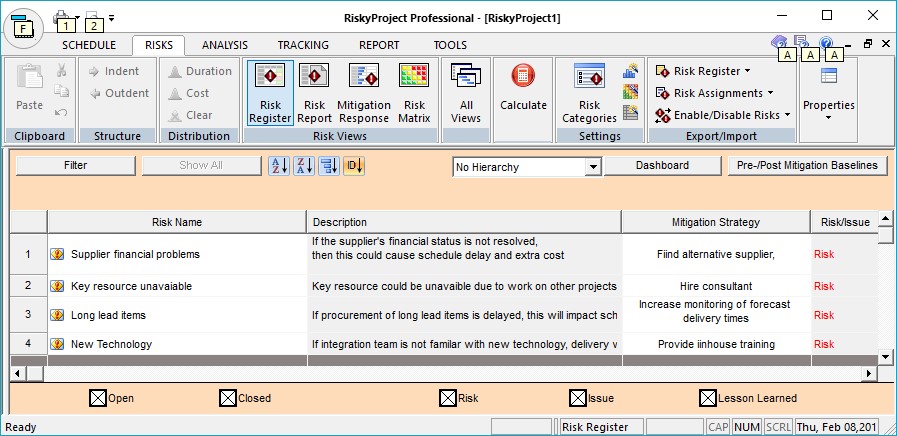
The next benefit of project risk analysis:
Using risk analysis is the most effective way to create project plans that allow you to deliver on budget and schedule by providing a “risk-adjusted” cost plan and schedule.
A risk-adjusted plan lets you add schedule margin and cost contingency in line with your organizations risk tolerance and provides a higher confidence of success.
Risk Events & Uncertainties
Project risk comes in two forms: risk events (manageable) and uncertainties (unmanageable).
Key personnel are critical to the success of projects, if they quit or become unavailable, this would be a risk event.
Risk events be managed, and categorized as Avoid, Transfer, Mitigate, or Accept depending upon their expected impact.
For those risk events that cannot be avoided or transferred, you can make plans to reduce the impact of the risks. In the case of critical resources, if they are unavailable, you can hire a consultant. Because we can only minimize, not eliminate these risks, we are left with residual risks that must be accounted for.
In addition, we need to account for uncertainty. Uncertainty is the variance in all project activities that is not due to risk events.
Uncertainty can come in many forms, such as:
- Travel time to work sites
- Time to complete a task
- Soil conditions
- Other sources
We all have an inherent understanding of uncertainty.
If you ask someone how long it will take them to complete a task, it will always come with the word “probably” attached; “it will probably take me an hour.”
More accurately, what the word “probably” tells you is what the person considers the most likely duration; but it could be shorter or longer.
These uncertainties can be modeled using statistical distributions curves (triangular, beta, normal, etc.) with probability distributions.
The level of uncertainty is often dependent upon many factors including personnel, maturity of technology, type of development etc. In the example below, we can model a 1 hour activity with low, most-likely and high estimates of 30 mins, 1 hr, and 2 hrs.
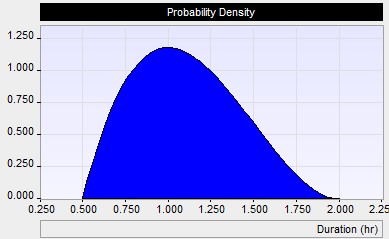
When you run a Monte Carlo simulation, the results will provide a more realistic understanding of how long we can expect the activity to take.
In this example, we can now see that the task will take on average 1.1 hrs and there is only a 40% chance that it will be completed within 1 hr or less. If you were using a single estimate, it would have been overly optimistic.
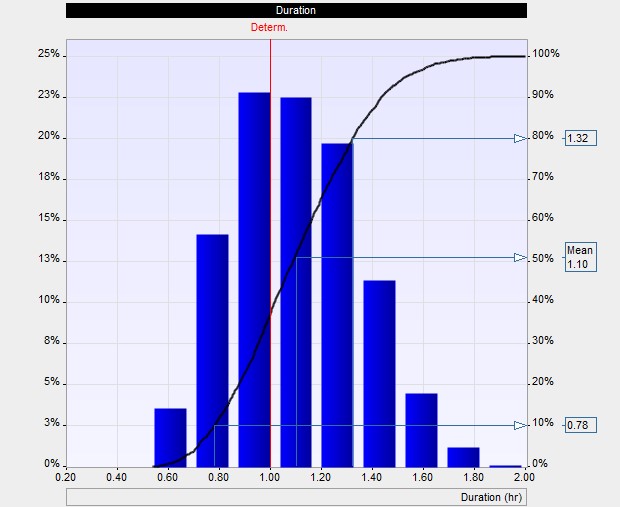
A Risk-Adjusted Project Plan
By assigning risks and uncertainties to the project activities and running a Monte Carlo simulation, we can generate a risk-adjusted plan.
This risk-adjusted plan provides a guide to both the level of project risk as well as risk-appropriate schedule margin and cost contingency.
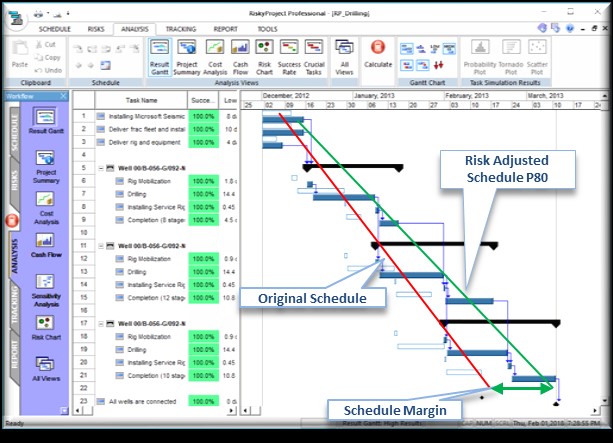
In this Result Gantt view, we can see how the difference between the original schedule and a P80 schedule. We can use the differences to create margins.
We can then use the same process to generate a cost contingency that reflects the level of project risk.
In this way you can have a project plan with buffers that even Goldilocks’ would like; not too little (high chance of failure), not too much (inefficient use of scarce resources) and a recipe that will keep your stakeholder’s happy (just right!).
Conclusion
Project risk analysis provides you with a simple way to improve insights into how to manage your projects, increase communication across your team.
More importantly a project risk analysis provides a reasonable risk-adjusted plan to improve your chances of project success.
And who doesn’t want project success?
